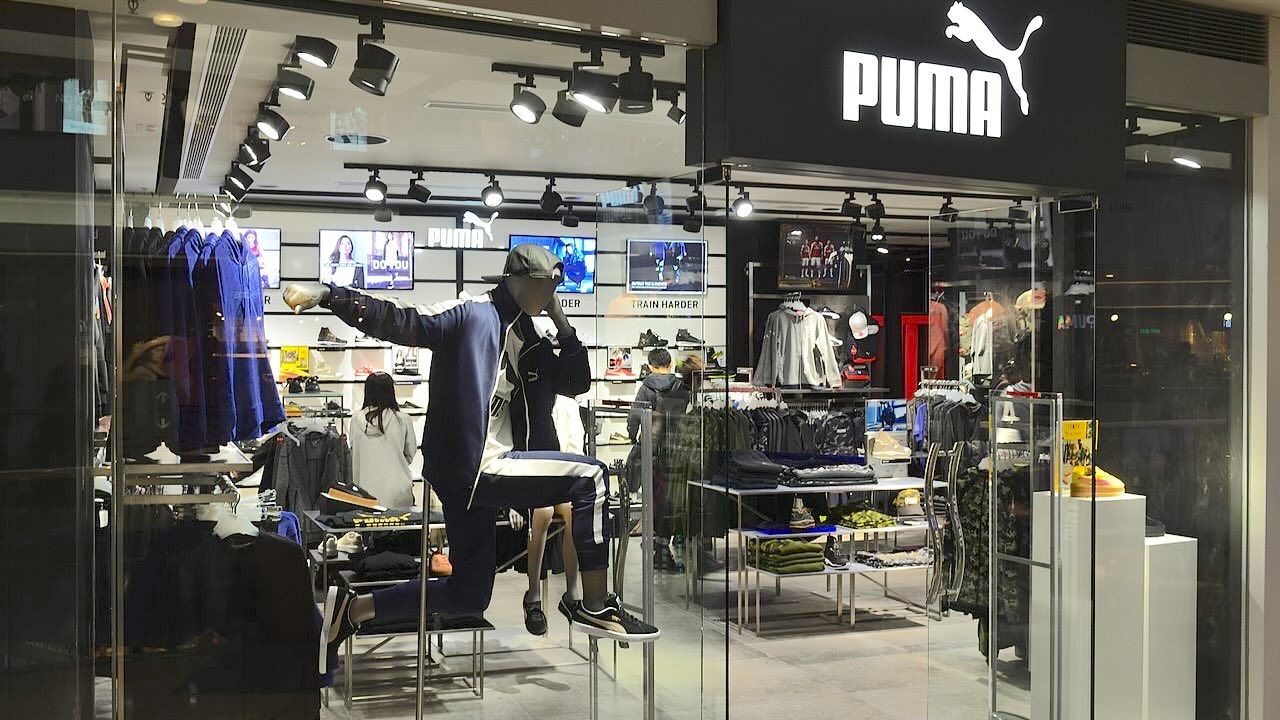
Puma’s organizational structure reinforces managerial control of processes throughout the business. This company structure defines the organizational design and is represented in the organizational chart of the corporation, pertaining to the structural system or anatomy of the processes and resources in the sporting goods business.
Puma’s organizational structure translates strategic management decisions to competitive advantages to address pressures from ASICS, Nike, Adidas, New Balance, Under Armour, and other firms. This competitive environment presents challenges in growing market share, revenues, and profits from the sale of sporting goods. Puma’s corporate structure provides part of the mechanism that supports strategic growth despite such competition.
Puma’s Organizational Structure Type & Characteristics
Puma has a unitary or U-form organizational structure. This structure type, also known as the functional structure type, involves a hierarchical structure where the organizational headquarters are at the top, and other organizational components receive and implement top executives’ strategic decisions for sporting goods business operations. The following are characteristics of Puma’s company structure:
- Hierarchy of functional departments (Primary characteristic)
- Product-based divisions
- Geographic divisions
Hierarchy of Functional Departments. This characteristic of Puma’s organizational structure involves the grouping of employees and business processes on the basis of similarities in human resource expertise, operational activities, or material resource utilization. The following are among the main functional groups in Puma’s hierarchical corporate structure:
- Office of Puma’s CEO
- Finance
- Sourcing
- Product
- Puma Supervisory Board (Strategy, operations, organization, employee representation)
An advantage of Puma’s hierarchical nature is the support for specialization among personnel, as well as the support for economies of scale through the organization-wide scope of each functional group in the sporting goods business. However, disadvantages of this feature of Puma’s corporate structure include the limitations of executive groups in addressing complex strategic problems involving multiple business areas and markets. For example, simultaneous and different strategic challenges involving multiple areas of the business may be difficult to solve through a single CEO or a small executive team at the top of the company’s organizational structure. Still, the business headquarters make the strategic management decisions for reaching the goals of Puma’s corporate vision and mission statements.
Product-Based Divisions. Puma’s corporate structure has product-based divisions, which are groupings based on the types of products that the company has. The following product-based divisions are present in Puma’s organizational structure:
- Footwear
- Apparel
- Accessories
This characteristic of Puma’s organizational structure allows the business to thrive by supporting competitive advantages based on factors like the uniqueness and quality of sports shoes. For example, these divisions support innovation in product design and development, which are emphasized in Puma’s generic competitive strategy and intensive growth strategies. This means that the company’s corporate structure capacitates strategic management for business processes that develop profitable products in the global sporting goods industry.
Geographic Divisions. With multinational business operations, Puma has geographic divisions in its corporate structure. The purpose of these divisions is to enable the enterprise to use strategic solutions specific to the unique conditions of regional sporting goods markets. Puma’s business structure has the following geographic divisions:
- Europe, Middle East, and Africa (EMEA)
- Americas
- Asia/Pacific
The differences in regional market conditions are accounted for in Puma’s marketing mix or 4Ps, thus illustrating how this organizational structure links to marketing strategies. The geographic divisions also allow the corporation to use its organizational structure to gather valuable sporting goods market information, which is used in strategic management decisions at the company headquarters in Germany.
Puma’s Structure: Advantages & Disadvantages, Recommendations
Puma’s business structure maintains strong vertical lines of authority and communication, running from the corporate headquarters to the bottommost level of the organization. The sporting goods company also involves other organizational structure types as secondary characteristics of the organizational design.
The company’s success as one of the biggest competitors in the international market for athletic footwear, accessories, apparel, and equipment indicates that the corporate structure supports business growth. Considering Puma’s operations management, the organizational design ensures that the business has the right structural framework and configuration to facilitate operational effectiveness and enable competitive advantages. Puma’s organizational structure is an effective mechanism for business processes and strategic implementations.
Puma’s organizational structure allows corporate headquarters’ control of business operations, although some issues remain regarding responsiveness to complex strategic problems facing the business at the multinational level. Other issues are also inherent in this organizational design. For example, this company structure could limit how Puma’s work culture (business culture) is strengthened for organizational development. The strong central hierarchy could make the company structure too rigid to accommodate work culture differences between regions.
A recommendation is to make the company’s corporate structure less rigid in terms of its hierarchy, leading to possible evolution into a matrix-type organizational structure. It is also recommended that Puma develop its business structure for more support for market-based strategies, involving possibly new groups in the geographic divisions and product-based divisions.
In implementing these recommendations, the SWOT analysis of Puma can provide further information about the industry environment and the condition of the global sporting goods market. Such an analysis can determine the suitability of the current organizational structure, as well as possible changes needed to ensure structural appropriateness to current business needs.
References
- Albert, D. (2024). What do you mean by organizational structure? Acknowledging and harmonizing differences and commonalities in three prominent perspectives. Journal of Organization Design, 13(1), 1-11.
- Fiet, J. O. (2025). Organizational Design and Control Systems. In The Theoretical Logic of Strategy (pp. 215-222). Cham: Springer Nature Switzerland.
- Pang, Y., Wu, H., Wang, X., & Shi, M. (2025). Impact of organizational structure and in-organization resource allocation on trust and trustworthiness. Journal of Business Research, 186, 114995.
- Puma SE – Corporate Governance.
- Puma SE – Our Management.
- Puma SE – Teams.
- U.S. Department of Commerce – International Trade Administration – Consumer Goods Industry.